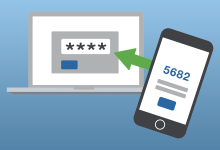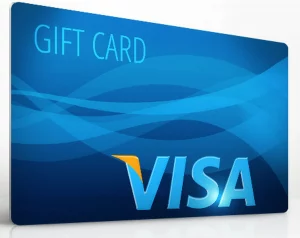Zelle vs PayPal: Choosing the Best Peer-to-Peer Payment App

Peer-to-peer (P2P) payment apps are revolutionising the way we send and receive money. With the rise in popularity of these apps, it can be challenging to determine which one is the best fit for your needs. Two prominent contenders in the P2P payment space are Zelle and PayPal. In this article we will talk about Zelle vs PayPal. We will compare and contrast the features, benefits, and drawbacks of Zelle and PayPal to help you make an informed decision.
1. Introduction to Zelle and PayPal
Zelle: The Bank-Backed P2P Payment App
Zelle is a P2P payment app that was launched in 2017. Unlike other P2P payment services, Zelle is owned and operated by Early Warning Services, LLC, a company co-owned by major US banks. This unique ownership structure sets Zelle apart from its competitors.
Zelle’s primary advantage is its seamless integration with participating banks’ mobile banking apps. It allows users to send and receive money directly from their bank accounts, eliminating the need for additional login credentials or third-party apps. Zelle aims to provide a convenient and secure money transfer experience for users of all ages.
PayPal: The Pioneer of Online Payments
PayPal, on the other hand, has been a major player in the online payment industry for over two decades. Established in 1998, PayPal quickly became the go-to platform for online transactions. It offers a wide range of services, including P2P payments, online shopping, and merchant solutions.
As a global leader in the fintech space, PayPal boasts a vast user base of over 305 million accounts worldwide. The platform allows users to send and receive money in multiple currencies across 203 countries. PayPal’s extensive network and international reach make it a preferred choice for individuals and businesses alike.
2. Popularity and User Base
When comparing Zelle and PayPal, it’s essential to consider their popularity and user base. Understanding the reach and acceptance of these platforms can help you determine which one is more widely used and convenient for your needs.
Zelle’s Growing User Base
Zelle has experienced significant growth since its launch. As of now, it has approximately 27.4 million active users. One of Zelle’s key advantages is its partnership with major US banks, including Bank of America, Wells Fargo, JP Morgan Chase, and others. This collaboration allows Zelle to tap into a vast customer base and provide a seamless payment experience to their account holders.
PayPal’s Global Dominance
In terms of popularity, PayPal is undoubtedly the leader in the online payment space. With over 305 million users across 203 countries, PayPal has established itself as a trusted and widely accepted payment method worldwide. Its extensive network and integration with various online platforms make it a convenient choice for individuals and businesses alike.
3. Features and Functionality
Both Zelle and PayPal offer a range of features and functionalities to simplify P2P payments. Let’s explore the key aspects of each platform and how they differ from one another.
Zelle’s Bank Integration and Instant Transfers
One of Zelle’s standout features is its seamless integration with participating banks’ mobile apps. This integration allows users to send and receive money directly from their bank accounts, without the need for additional login credentials or third-party apps. Zelle’s instant transfer feature enables users to receive money almost instantly, making it a convenient option for urgent transactions.
PayPal’s Versatility and International Reach
PayPal’s versatility is one of its major strengths. It offers a range of services, including P2P payments, online shopping, and merchant solutions. With PayPal, users can send and receive money in multiple currencies across the globe, making it an excellent choice for international transactions. Additionally, PayPal integrates with various e-commerce platforms, allowing businesses to accept payments seamlessly.
4. Transaction Fees and Limits
When it comes to transaction fees and limits, it is crucial to understand the costs associated with using each platform. Let’s delve into the fee structures and transaction limits of Zelle and PayPal.
Zelle’s Fee-Free Transactions
Zelle prides itself on offering fee-free transactions for P2P payments. Since Zelle is integrated with participating banks’ mobile apps, there are typically no additional charges for using the service. However, it is essential to check with your bank regarding any potential fees they may impose.
PayPal’s Transparent Fee Structure
PayPal’s fee structure is transparent and varies depending on the type of transaction. For P2P payments, there are no fees when sending money to friends and family within the same country. However, if you use a debit or credit card for P2P transactions, a fee of 2.9% plus $0.30 per transaction applies. It is worth noting that PayPal charges fees for certain types of transactions, such as international payments and merchant services, so it’s essential to review their fee schedule for complete clarity.
5. Security and Safety
When it comes to financial transactions, security and safety are paramount. Let’s explore how Zelle and PayPal prioritize user security.
Zelle’s Bank-Backed Security
Zelle’s association with major US banks provides an additional layer of security. Since Zelle operates within participating banks’ mobile apps, it leverages the existing security measures and infrastructure of those banks. This integration ensures that users’ personal and financial information is protected by their respective banks’ security protocols.
PayPal’s Robust Security Measures
PayPal takes security seriously and employs robust measures to safeguard users’ information. The platform uses industry-standard data encryption to protect users’ confidential information. Additionally, PayPal offers two-factor authentication and buyer and seller protection programs to enhance security. It is worth noting that PayPal’s reputation as a trusted and secure payment platform has been established over its long history in the industry.
6. Transfer Speed and Convenience
Another essential aspect to consider when choosing a P2P payment app is the transfer speed and overall convenience of the platform. Let’s compare Zelle and PayPal in terms of these factors.
Zelle’s Instant Transfers and Bank Integration
Zelle’s integration with participating banks allows for instant transfers between users. Since the platform operates within the banks’ mobile apps, users can send and receive money seamlessly within seconds. This convenience is especially beneficial for urgent payments or when immediate access to funds is required.
PayPal’s Flexibility and Accessibility
PayPal offers various transfer options, each with its own processing time. Standard transfers to a linked bank account typically take 1-3 business days. However, PayPal also provides an instant transfer feature for a fee, allowing users to access their funds immediately. This flexibility caters to different user preferences and needs.
7. International Money Transfers
If you frequently engage in international transactions, it is crucial to consider the capabilities and fees associated with international money transfers. Let’s explore how Zelle and PayPal handle international transfers.
PayPal’s Global Network
PayPal is renowned for its extensive global network, allowing users to send and receive money in multiple currencies across 203 countries. With competitive exchange rates and speedy transfers, PayPal is an ideal choice for international money transfers. Its international reach and established reputation make it a trusted platform for cross-border transactions.
Promoted contents:
Zelle’s Domestic Focus
Unlike PayPal, Zelle is primarily focused on domestic transfers within the United States. It does not offer international transfer services. If your primary requirement is international money transfers, PayPal’s global network makes it the preferred choice.
8. User Experience and Interface
The user experience and interface of a payment app can greatly impact its usability and overall satisfaction. Let’s compare the user experience of Zelle and PayPal.
Zelle’s Seamless Bank Integration
Zelle’s user experience revolves around its integration with participating banks’ mobile apps. This integration allows users to access Zelle’s services seamlessly without the need for separate login credentials or app installations. The familiarity of the banking app interface provides a convenient and user-friendly experience.
PayPal’s Intuitive Design and Versatility
PayPal’s user experience is characterized by its intuitive design and versatility. The platform offers a user-friendly interface that is easy to navigate, whether you are sending money, making online purchases, or managing your business transactions. PayPal’s extensive features and integrations provide a versatile experience for users across various contexts.
9. Customer Support
Customer support is an important aspect to consider when choosing a payment app, as it ensures prompt resolution of any issues or concerns. Let’s examine the customer support options provided by Zelle and PayPal.
Zelle’s Bank-Dependent Support
Since Zelle is integrated within participating banks’ mobile apps, customer support is typically handled by the respective banks. Users can contact their bank’s customer support channels for assistance with Zelle-related queries or issues. This bank-dependent support ensures that users receive support from a trusted and familiar source.
PayPal’s Dedicated Support Channels
PayPal offers dedicated customer support channels, including phone support, email support, and an extensive knowledge base. Users can access comprehensive resources and resolve their queries through multiple channels. PayPal’s commitment to customer support ensures that users have access to assistance whenever needed.
10. Integration and Ecosystem
The integration and ecosystem of a payment app can impact its compatibility with other platforms and services. Let’s explore how Zelle and PayPal integrate with various systems.
Zelle’s Integration with Participating Banks
Zelle’s integration with participating banks’ mobile apps ensures compatibility and seamless functionality within those banking ecosystems. This integration allows users to access Zelle’s services without the need for additional apps or login credentials. If you already use a mobile banking app from a participating bank, Zelle’s integration provides a convenient and streamlined experience.
PayPal’s Extensive Integrations
PayPal’s extensive integrations with various e-commerce platforms, online marketplaces, and merchant solutions make it a versatile choice for businesses. PayPal integrates with popular platforms like Shopify, eBay, and WooCommerce, allowing businesses to accept payments seamlessly. Additionally, PayPal’s developer-friendly API enables custom integrations for businesses with specific requirements.
Conclusion: Choosing the Right P2P Payment App
In conclusion, both Zelle and PayPal offer unique features and benefits for P2P payments. Zelle’s seamless integration with participating banks’ mobile apps provides a convenient and secure experience for users. On the other hand, PayPal’s global reach, versatility, and extensive integrations make it an ideal choice for international transactions and businesses.
When deciding between Zelle and PayPal, consider your specific needs, such as transfer speed, international transfers, and integration requirements. Assess the fees, user experience, and customer support options to make an informed decision. Ultimately, the right P2P payment app depends on your individual preferences and priorities.
FAQs
What is Zelle and PayPal?
Zelle is a P2P payment app owned by Early Warning Services, co-owned by major US banks. It allows users to send and receive money directly from their bank accounts. PayPal is an online payment platform with a vast user base, offering P2P payments, online shopping, and merchant solutions.
How do Zelle and PayPal compare in terms of popularity and user base?
Zelle has around 27.4 million active users and benefits from its partnership with major US banks. PayPal has over 305 million users across 203 countries, establishing itself as a widely accepted global payment method.
What are the key features of Zelle and PayPal?
Zelle’s standout features include seamless bank integration and instant transfers. PayPal offers versatility with P2P payments, online shopping, and international money transfers.
What are the transaction fees and limits for Zelle and PayPal?
Zelle offers fee-free transactions through participating banks’ mobile apps. PayPal’s fees vary; P2P payments to friends and family within the same country are fee-free, but using a debit/credit card incurs a 2.9% + $0.30 fee per transaction.
How do Zelle and PayPal prioritize security?
Zelle leverages the security measures of participating banks, while PayPal uses data encryption, two-factor authentication, and buyer/seller protection programs for robust security.
How do Zelle and PayPal differ in transfer speed and convenience?
Zelle provides instant transfers within participating banks’ mobile apps. PayPal offers various transfer options, including standard transfers taking 1-3 business days and instant transfers for a fee.
Can Zelle and PayPal handle international money transfers?
PayPal’s extensive global network allows international money transfers in multiple currencies and 203 countries. Zelle is primarily focused on domestic transfers within the US and does not support international transfers.
What is the user experience and interface like for Zelle and PayPal?
Zelle offers a user-friendly experience through seamless bank integration. PayPal provides an intuitive design and versatility for various services, catering to different user preferences.
How is customer support provided by Zelle and PayPal?
Zelle’s support is handled by participating banks, while PayPal offers dedicated customer support channels, including phone, email, and knowledge base resources.
How do Zelle and PayPal integrate with other systems?
Zelle integrates with participating banks’ mobile apps, providing compatibility within their ecosystems. PayPal integrates with various e-commerce platforms and offers a developer-friendly API for custom integrations.








